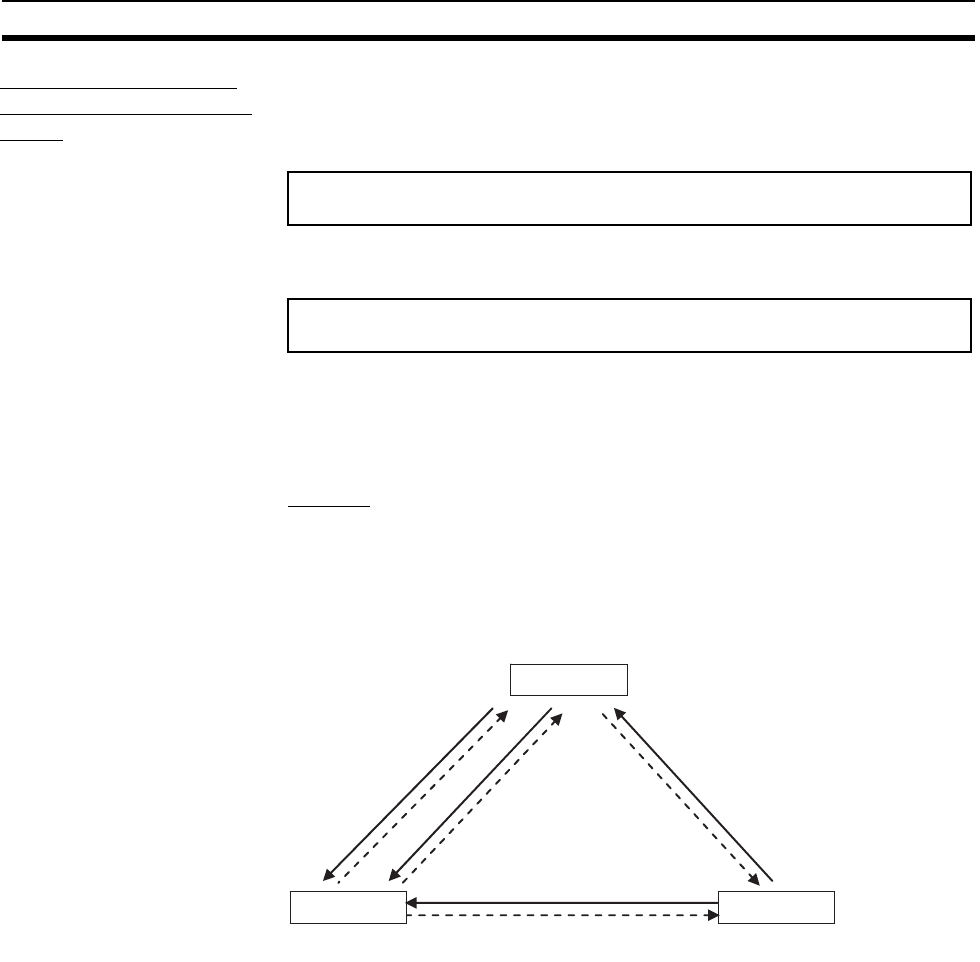
263
Communications System Section 10-1
Packet Interval (RPI)
and Bandwidth Usage
(PPS)
In a tag data link, the number of packets transferred each second is called the
bandwidth used or PPS (packets per second).
The PPS is calculated from the RPI and heartbeat as follows for each connec-
tion:
The following equation is used to calculate the total number of packets trans-
ferred by each EtherNet/IP Unit or built-in EtherNet/IP port in 1 second.
Note Connections set as target connections must be added, too.
The maximum number of packets that the Unit can transfer in 1 second
(called the allowed Unit bandwidth) is 6,000 pps (CJ2M: 3,000 pps), so set the
connection below this maximum value.
Example
Node 1 has both originator and target connections, with send RPI of 200 ms
and 2 ms, and receive RPI of 1 ms.
Node 2 has originator connections only, with receive RPI of 200 ms, 2 ms, and
5 ms.
Node 3 has target connections only, with send RPI of 5 ms and 1 ms.
Each node’s total PPS is calculated as follows.
• Total PPS of node 1 Unit
= 1,000 / 200 ms + 1,000 / 2 ms + 1,000 / 1 ms (for data)
+1,000 / 200 ms + 1,000 / 100 ms + 1,000 / 100 ms (for heartbeat)
= 1,530 pps
• Total PPS of node 2 Unit
= 1,000 / 200 ms + 1,000 / 2 ms + 1,000 / 5 ms (for data)
+1,000 / 200 ms + 1,000 / 100 ms + 1,000 / 100 ms (for heartbeat)
= 730 pps
• Total PPS of node 3 Unit
= 1,000 / 5 ms + 1,000 / 1 ms (for data)
+1,000 / 100 ms + 1,000 / 100 ms (for heartbeat)
= 1,220 pps
All of the Units are within the allowed Unit bandwidth of 6,000 pps (CJ2M:
3,000 pps), so they can transfer data.
PPS used in a connection (pps)
= (1,000 ÷ RPI (ms)) + (1,000 ÷ Heartbeat transmission period (ms))
Unit’s total PPS = Total PPS of originator connections
+ Total PPS of target connections (See note.)
RPI: 1 ms
HB: 100 ms
O: Originator
T: Target
HB: Heartbeat
O
T
T
O
T
O
T
O
RPI:5ms
HB:100ms
Node 1
Node 3
RPI: 2 ms
HB: 100 ms
RPI: 200 ms
HB: 200 ms
Node 2


















